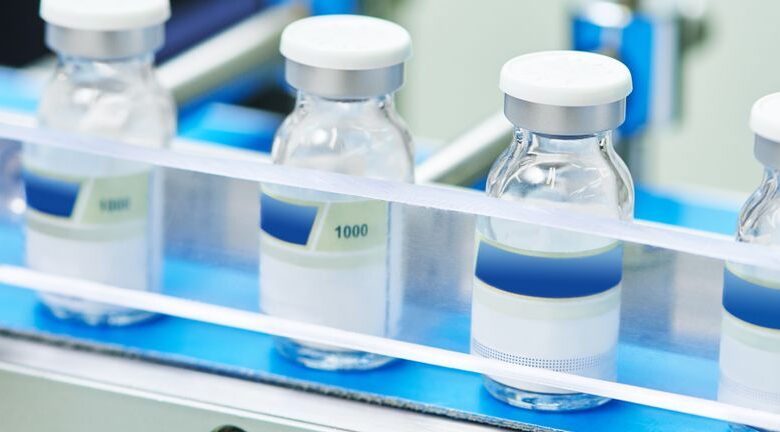These 4 Measures Indicate That Sotac Pharmaceuticals (NSE:SOTAC) Is Using Debt Reasonably Well

The external fund manager backed by Berkshire Hathaway’s Charlie Munger, Li Lu, makes no bones about it when he says ‘The biggest investment risk is not the volatility of prices, but whether you will suffer a permanent loss of capital.’ So it might be obvious that you need to consider debt, when you think about how risky any given stock is, because too much debt can sink a company. As with many other companies Sotac Pharmaceuticals Limited (NSE:SOTAC) makes use of debt. But the more important question is: how much risk is that debt creating?
Why Does Debt Bring Risk?
Debt assists a business until the business has trouble paying it off, either with new capital or with free cash flow. Part and parcel of capitalism is the process of ‘creative destruction’ where failed businesses are mercilessly liquidated by their bankers. While that is not too common, we often do see indebted companies permanently diluting shareholders because lenders force them to raise capital at a distressed price. Of course, plenty of companies use debt to fund growth, without any negative consequences. When we think about a company’s use of debt, we first look at cash and debt together.
What Is Sotac Pharmaceuticals’s Net Debt?
You can click the graphic below for the historical numbers, but it shows that as of March 2025 Sotac Pharmaceuticals had ₹437.0m of debt, an increase on ₹248.6m, over one year. However, because it has a cash reserve of ₹15.6m, its net debt is less, at about ₹421.4m.
How Healthy Is Sotac Pharmaceuticals’ Balance Sheet?
We can see from the most recent balance sheet that Sotac Pharmaceuticals had liabilities of ₹515.5m falling due within a year, and liabilities of ₹143.6m due beyond that. On the other hand, it had cash of ₹15.6m and ₹346.3m worth of receivables due within a year. So it has liabilities totalling ₹297.1m more than its cash and near-term receivables, combined.
While this might seem like a lot, it is not so bad since Sotac Pharmaceuticals has a market capitalization of ₹1.19b, and so it could probably strengthen its balance sheet by raising capital if it needed to. But it’s clear that we should definitely closely examine whether it can manage its debt without dilution.
Check out our latest analysis for Sotac Pharmaceuticals
We use two main ratios to inform us about debt levels relative to earnings. The first is net debt divided by earnings before interest, tax, depreciation, and amortization (EBITDA), while the second is how many times its earnings before interest and tax (EBIT) covers its interest expense (or its interest cover, for short). Thus we consider debt relative to earnings both with and without depreciation and amortization expenses.
Sotac Pharmaceuticals’s net debt is sitting at a very reasonable 2.4 times its EBITDA, while its EBIT covered its interest expense just 5.3 times last year. While these numbers do not alarm us, it’s worth noting that the cost of the company’s debt is having a real impact. Pleasingly, Sotac Pharmaceuticals is growing its EBIT faster than former Australian PM Bob Hawke downs a yard glass, boasting a 139% gain in the last twelve months. The balance sheet is clearly the area to focus on when you are analysing debt. But you can’t view debt in total isolation; since Sotac Pharmaceuticals will need earnings to service that debt. So when considering debt, it’s definitely worth looking at the earnings trend. Click here for an interactive snapshot.
Finally, while the tax-man may adore accounting profits, lenders only accept cold hard cash. So we clearly need to look at whether that EBIT is leading to corresponding free cash flow. During the last three years, Sotac Pharmaceuticals burned a lot of cash. While that may be a result of expenditure for growth, it does make the debt far more risky.
Our View
Sotac Pharmaceuticals’s conversion of EBIT to free cash flow was a real negative on this analysis, although the other factors we considered were considerably better. There’s no doubt that its ability to to grow its EBIT is pretty flash. When we consider all the factors mentioned above, we do feel a bit cautious about Sotac Pharmaceuticals’s use of debt. While debt does have its upside in higher potential returns, we think shareholders should definitely consider how debt levels might make the stock more risky. When analysing debt levels, the balance sheet is the obvious place to start. But ultimately, every company can contain risks that exist outside of the balance sheet. We’ve identified 4 warning signs with Sotac Pharmaceuticals (at least 2 which are a bit concerning) , and understanding them should be part of your investment process.
At the end of the day, it’s often better to focus on companies that are free from net debt. You can access our special list of such companies (all with a track record of profit growth). It’s free.
New: Manage All Your Stock Portfolios in One Place
We’ve created the ultimate portfolio companion for stock investors, and it’s free.
• Connect an unlimited number of Portfolios and see your total in one currency
• Be alerted to new Warning Signs or Risks via email or mobile
• Track the Fair Value of your stocks
Have feedback on this article? Concerned about the content? Get in touch with us directly. Alternatively, email editorial-team (at) simplywallst.com.
This article by Simply Wall St is general in nature. We provide commentary based on historical data and analyst forecasts only using an unbiased methodology and our articles are not intended to be financial advice. It does not constitute a recommendation to buy or sell any stock, and does not take account of your objectives, or your financial situation. We aim to bring you long-term focused analysis driven by fundamental data. Note that our analysis may not factor in the latest price-sensitive company announcements or qualitative material. Simply Wall St has no position in any stocks mentioned.
Credit: Source link






